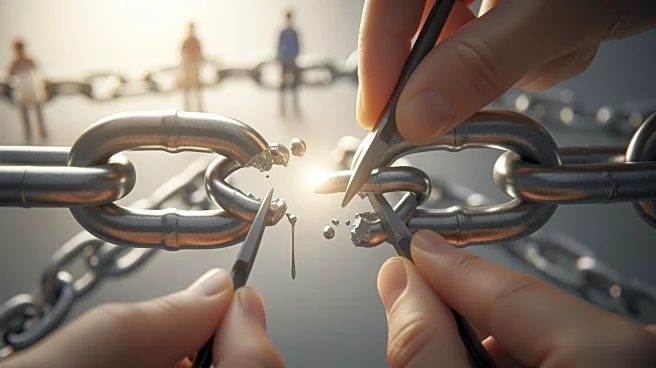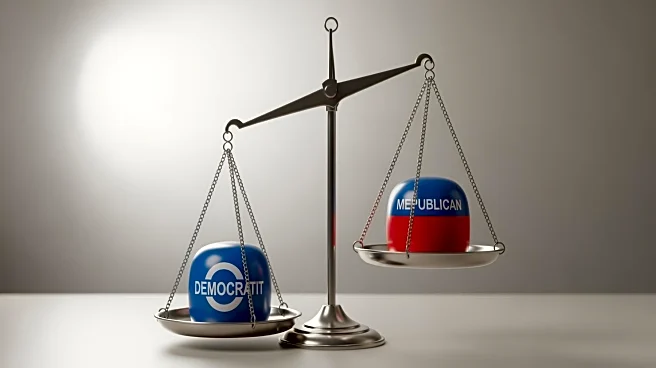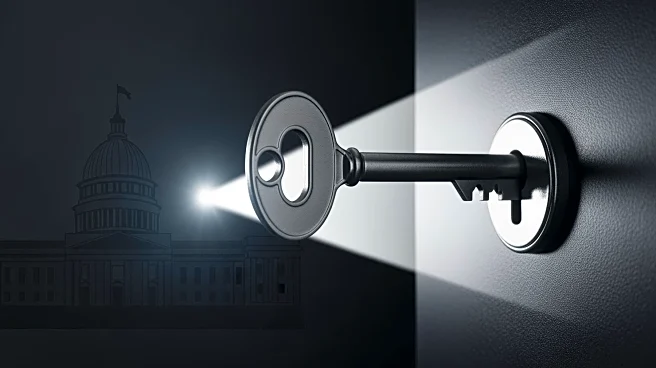What's Happening?
The House of Representatives has passed a bill to end the longest government shutdown in American history. The bill, approved by a margin of 222-209, will fund the government through January 30. This legislative
action comes after prolonged negotiations and political standoffs that have left many federal operations in limbo. The shutdown has affected numerous government services and employees, creating widespread disruptions. The passage of the bill marks a critical step towards restoring normalcy and ensuring the continuity of government functions.
Why It's Important?
Ending the longest government shutdown in U.S. history is crucial for several reasons. It alleviates the financial strain on federal employees who have been furloughed or working without pay. The resumption of government services is vital for public welfare, including areas such as national security, public health, and infrastructure maintenance. Politically, the resolution of the shutdown reflects the ability of lawmakers to reach a compromise, which may influence future legislative negotiations. The shutdown's resolution also impacts public perception of government efficacy and stability.
What's Next?
With the government funded through January 30, lawmakers will need to engage in further negotiations to establish a long-term budget solution. This may involve addressing contentious issues that contributed to the shutdown, such as spending priorities and policy disagreements. Stakeholders, including government agencies, employees, and the public, will be watching closely to see how Congress navigates these challenges. The outcome of these discussions will have implications for future government operations and fiscal policy.











